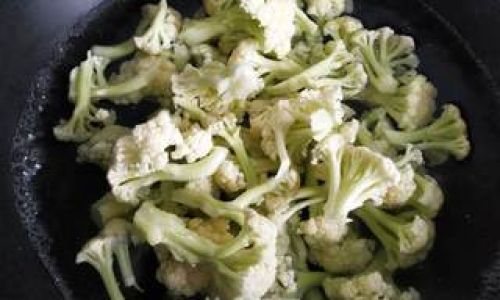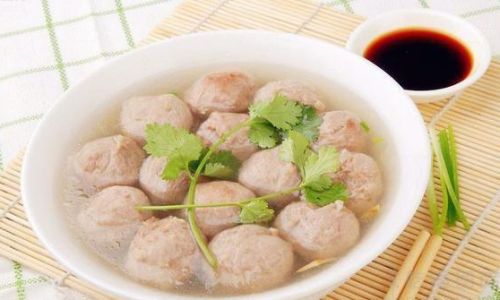Introduction
In the realm of culinary delights, fried lotus root balls (often referred to as lotus root meatballs or simply lotus root丸子 in some dialects) stand out as a delightful fusion of textures and flavors. Crispy on the outside, tender and flavorful within, these bite-sized morsels are a favorite among many for their unique taste and the satisfaction they bring with each bite. However, achieving the perfect lotus root ball that holds together during frying can be a challenge for even the most seasoned chefs. In this comprehensive guide, we will delve into the intricacies of how to fry lotus root balls without them falling apart, ensuring your kitchen adventures yield delicious and presentable results.
Understanding Lotus Root: The Base Ingredient
Before diving into the preparation, it’s crucial to understand the star of our dish: lotus root. Lotus root, scientifically known as Nelumbo nucifera, is a rhizome of the lotus plant, primarily cultivated in Asia. Its cross-section reveals a series of holes running lengthwise, giving it a distinctive appearance. These holes not only add an aesthetic appeal but also play a role in the texture and cooking process of lotus root dishes.
Lotus root itself has a slightly sweet, crisp flavor when raw and becomes tender and slightly starchy when cooked. Its ability to absorb flavors makes it an excellent candidate for various culinary preparations, including stir-fries, soups, and, of course, fried dishes like lotus root balls.
Ingredients and Preparation
To create lotus root balls that don’t fall apart during frying, you’ll need a combination of ingredients that provide both binding strength and flavor. Here’s a detailed breakdown of what you’ll need and how to prepare each component:
-
Lotus Root: Choose firm, fresh lotus root with no signs of softening or discoloration. Peel it and slice it into thin rounds, then grate or finely chop it to form a paste-like consistency.

-
Binding Agents: To ensure your lotus root balls hold together, you’ll need binding agents. Common choices include:
- Tapioca Flour/Starch: Provides a glossy finish and helps the mixture adhere together.
- Cornstarch: Adds a bit of crispiness and also acts as a binder.
- Panko Breadcrumbs: Adds volume and a light, crispy texture.
- Egg Whites: Natural glue that helps bind ingredients together without adding too much heaviness.
-
Flavorings: To elevate the taste of your lotus root balls, consider adding:
- Minced Pork or Shrimp: Adds moisture, flavor, and a meaty texture.
- Green Onions and Garlic: For a fresh, aromatic touch.
- Soy Sauce, Sesame Oil, and White Pepper: Seasonings that enhance the overall flavor profile.
- Breadcrumbs or Panko: For added crispiness and to help absorb excess moisture.
-
Seasonings:
- Salt: To taste.
- Sugar: A pinch to balance the flavors.
- Five-Spice Powder: Optional, for an aromatic, Asian-inspired twist.
Step-by-Step Preparation
Now that you have your ingredients ready, let’s walk through the process of making lotus root balls that won’t fall apart during frying:

-
Prepare the Lotus Root:
Peel the lotus root and slice it into thin rounds. Use a food processor or a sharp knife to grate or finely chop the lotus root until it reaches a paste-like consistency. Be careful not to over-process, as you still want some texture.
-
Combine Ingredients:
- In a large mixing bowl, combine the grated lotus root with your chosen binding agents (tapioca flour, cornstarch, and/or panko breadcrumbs). Add egg whites if using.
- If incorporating minced pork or shrimp, mix these in gently to avoid compacting the meat too much.
- Add your flavorings and seasonings. Mix everything thoroughly until a cohesive mixture forms. The mixture should be slightly sticky but not overly wet. If it’s too wet, add more binding agent; if too dry, add a splash of water or more egg white.
-
Form the Balls:

- Wet your hands slightly to prevent sticking. Take portions of the mixture and roll them into small, compact balls. Ensure they are tightly packed to minimize the risk of falling apart during frying.
- Place the formed balls on a plate lined with parchment paper. Refrigerate for at least 30 minutes to firm up. This step is crucial as it helps the mixture set and reduces the chances of the balls breaking apart during frying.
-
Prepare for Frying:
- Heat a sufficient amount of oil in a deep fryer or a large, heavy-bottomed pot to about 350°F (175°C). Use an oil with a high smoking point, such as peanut oil or canola oil, to ensure even frying and a crispy finish.
- While the oil is heating, line a baking sheet with paper towels to drain the fried balls.
-
Fry the Balls:
- Carefully drop a few lotus root balls into the hot oil, ensuring they are not overcrowded. Overcrowding will lower the oil temperature, leading to soggy results.
- Fry for about 3-4 minutes, or until golden brown and crispy. Use a slotted spoon or frying basket to gently turn the balls halfway through frying to ensure even cooking.
- Once done, remove the balls from the oil and let them drain on the prepared baking sheet.
-
Serve and Enjoy:
Allow the fried lotus root balls to cool slightly before serving. They can be enjoyed as a standalone snack, dipped in a sauce like soy sauce or sweet and sour sauce, or incorporated into larger dishes like stir-fries or soups.

Tips for Success
- Temperature Control: Maintaining the correct oil temperature is key. Too low will result in greasy balls, while too high can burn the exterior before the interior is cooked.
- Don’t Overmix: When combining ingredients, avoid overmixing, especially if using minced meat, as this can lead to a denser texture.
- Chilling Time: The chilling step is non-negotiable. It helps the mixture set and makes the balls less likely to fall apart during frying.
- Crowding the Pan: Fry in batches to avoid lowering the oil temperature. This ensures even frying and a crispy exterior.
- Testing a Ball: Before frying all your balls, test one to see if it holds together. Adjust your mixture if necessary before continuing.
Troubleshooting Common Issues
- Balls Falling Apart: If your balls fall apart during frying, it could be due to insufficient binding agents or not chilling the mixture enough. Add more binding agent and ensure the mixture is well-chilled before frying.
- Greasy Balls: This often happens when the oil temperature is too low. Increase the temperature and make sure the oil is hot before adding the balls.
- Undercooked Interior: If the inside of your balls is still raw or too soft, they may need more time in the oil. Adjust your frying time accordingly.
Conclusion
Mastering the art of frying lotus root balls without them falling apart requires attention to detail, the right ingredients, and a bit of practice. By following the steps outlined in this guide, you’ll be able to create delicious, crispy lotus root balls that are sure to impress your family and friends. Remember, the key to success lies in proper preparation, maintaining the correct oil temperature, and not skipping the chilling step. Happy frying!





0 comments